- Books Name
- Yash Tyagi Coaching Science Book
- Publication
- ACERISE INDIA
- Course
- CBSE Class 9
- Subject
- Science
Permanent Tissues
Permanent Tissues
There are certain meristematic cells that can not divide throughout their life. They actually lose their tendency to form new cells. As a result, they form another tissue that is Permanent. They have particular functions except forming new cells. These tissues are derived from the meristematic tissue but their cells have lost the power of division. They are of two types:
- Simple permanent tissue
- Complex permanent tissue
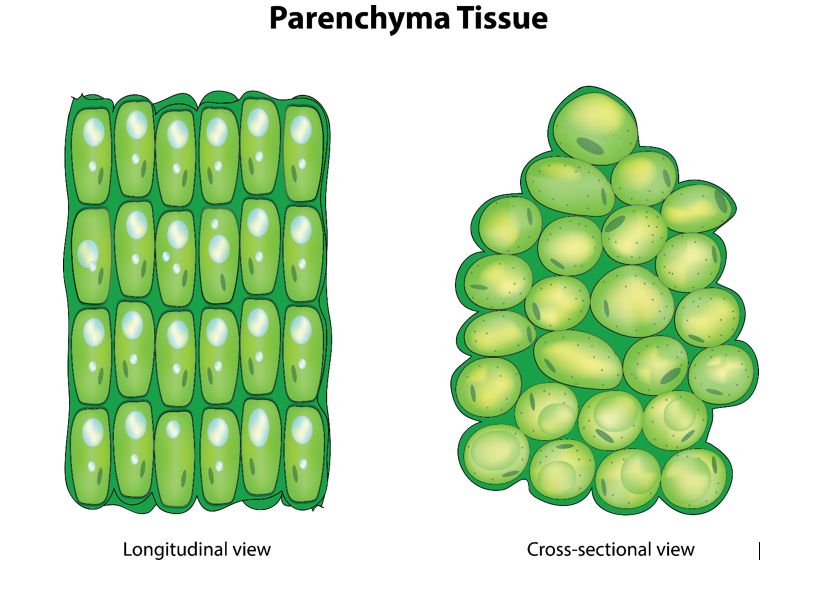
Simple permanent tissues
These tissues are composed of cells which are structurally and functionally similar. Thus, these tissues are all made of one type of cells. Depending upon the composition and function they are further classified into three types:
- Parenchyma
- Collenchyma
- Sclerenchyma
Let us learn about the difference between the three:
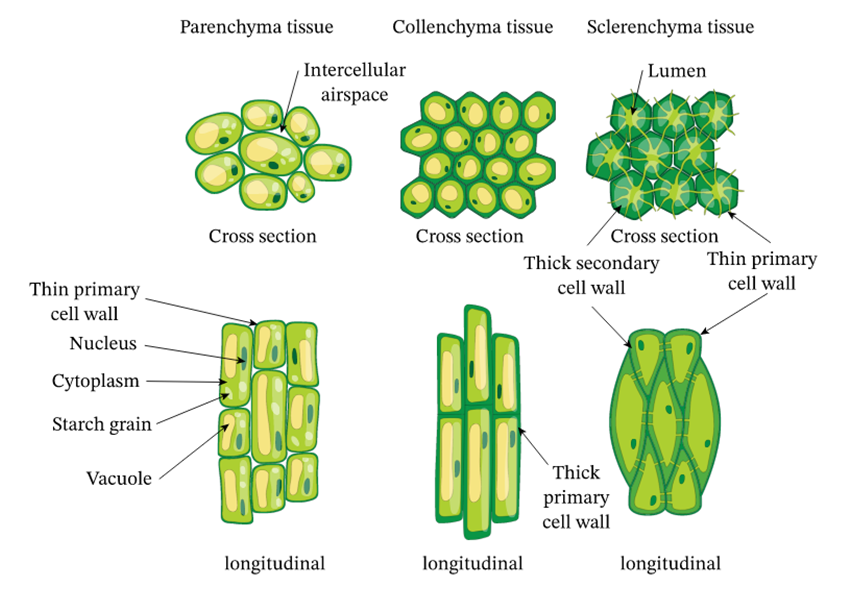
Parenchyma
This tissue is widely distributed in plant body such as stem, roots, leaves, flowers and fruits. It performs various functions and also has distinct features in xerophytes and hydrophytes. Let us see the features it possesses.
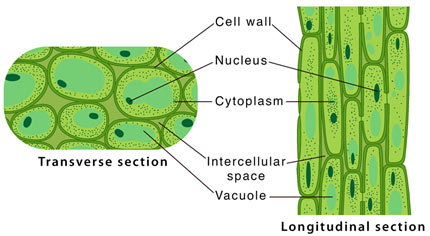
Characteristics
- Parenchyma cells are living and possess the power of division.
- The cells are rounded or isodiametric that isequally expanded in all sides.
- The parenchymatous cells are oval, round, polygonal or elongated in shape.
- The cell wall is thin and enclosed but dense cytoplasm which contains a small nucleus.
- Intercellular spaces are present
Functions
1. Parenchyma serves as a packing tissue.
2. Parenchyma acts as the main support to the stem.
3. Parenchyma serves as food storage tissue.
4. It helps in transporting materials.
5. It allows gaseous exchange.
6. It stores waste products of plants.
7. If chloroplast is present, the parenchyma tissue is called chlorenchyma and it helps in performing photosynthesis.
8. In hydrophytes large air cavities present called arenchyma that provide buoyancy to plants.
Collenchyma
You must have seen that some plant parts can bend without breaking. This feature is due to the presence of a mechanical tissue called collenchymas. They are generally found below epidermis of dicot stem and petiole. They also occur in midribs of dicot leaves but are absent in monocots.
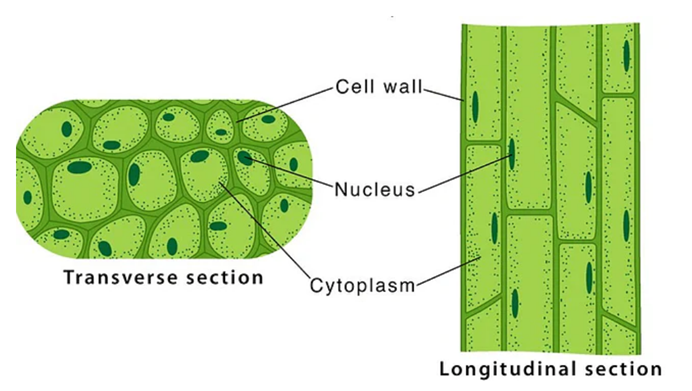
Characteristics
- They are living cells.
- They are characterized by the deposition of extra cellulose at the corners of the cells.
- The intercellular spaces are generally absent.
Functions
- It is a mechanical tissue so, it provides mechanical support to plant and its parts.
- It also provides strength and flexibility.
Sclerenchyma
You all have used and seen coconut for various purposes like performing some rituals, for eating, drinking coconut water, etc. The husk that is found outside the coconut looks like thin fibres and is hard too. This is made up of cells that is Sclerenchyma. Let us study about it.
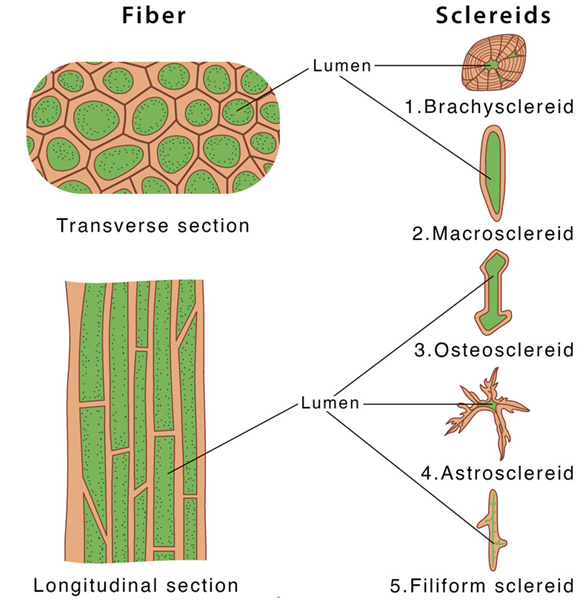
Characteristics
- They are actually dead cells.
- The walls of these cells are thickened with deposition of lignin.
- There are no intercellular spaces.
Cells of sclerenchyma are basically of two types:
- Fibres
- Sclereids
Fibres: They consist of very long, narrow, thick and lignified cells. They are usually pointed at both ends.
Sclereids: They are irregular in shape. They are also dead and are found under different parts like cortex, pith, phloem, etc.
Both fibres and sclereids have thin areas on them that are called pits.
Functions
- They provide mechanical support andare protective in nature.
Protective tissue
Plants and plant parts also need protection from external factors. So, there are certain tissues that perform this action. Let us learn about them. It includes epidermis and cork (or phellem).
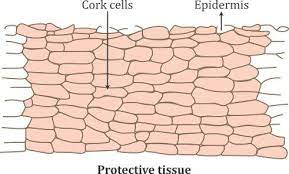
Epidermis
Epidermis is one cell thick layer and is covered with cuticle. It is a waterproof layer as it has a waxy substance called cutin. The cells of the epidermis are elongated and flattened and do not contain any intracellular space. Function of the epidermis is to protect the plant from desiccation and infection.
Cork
As plants grow older, epidermis undergoes certain changes and transforms into phellogen or cork. The cambium cells of cork are rectangular and are dead. The walls of cork cells are heavily thickened by the deposition of suberin which makes these cells impermeable to water and gases. Cork cells prevent desiccation, infection and mechanical injury.
Stomata
Epidermis of a leaf has small pores, called stomata. Each stoma is bounded by specialized epidermal cells called guard cells. These Guard cells are the epidermal cells only and contain chloroplasts. The stoma allows gaseous exchange to occur during photosynthesis and respiration.
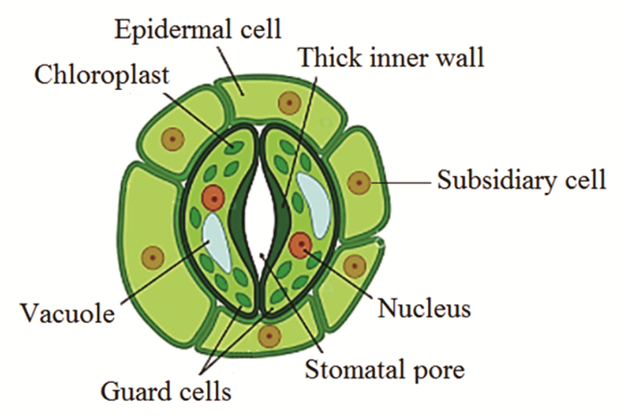
Complex permanent tissues
You all know that green plants can carry out photosynthesis and also absorb water through roots. But it may make you curious to know that how these substances are transported to whole plant. As we know, they don’t have blood, lymph or so. It is due to this complex tissue that water is transported and food is translocated. Let us learn about it. They consist of more than one type of cells. They are of the following two types:
- Xylem
- Phloem
Xylem and phloem are popularly known as vascular tissues
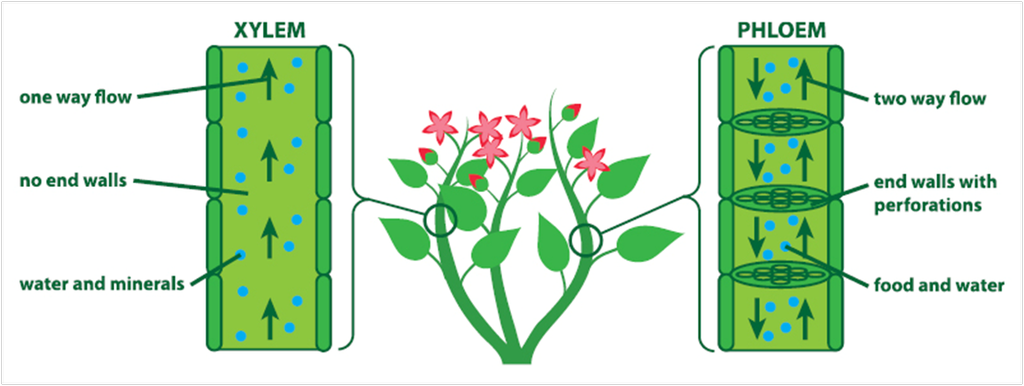
Xylem
Xylem is composed of cells with four different parts:
- Tracheids
- Vessels
- Xylem parenchyma
- Xylem sclerenchyma.
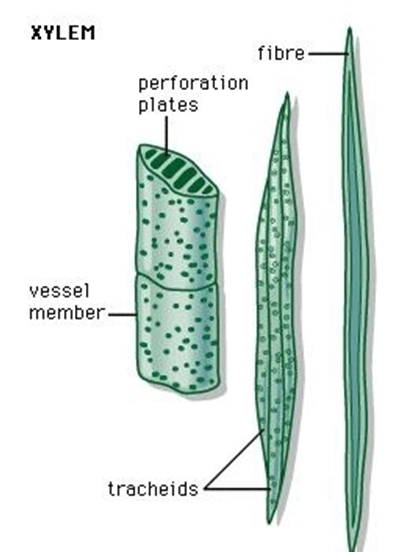
Except xylem parenchyma, all other xylem elements are dead and bounded by thick lignified walls. Vessels are shorter and wider than tracheid. Vessels are very long tube-like structures. Tracheids are elongated cells with tapering ends. They also conduct water. Since, tracheids do not have open ends like vessel, so the water has to pass from cell to cell via the pits.
Functions
- The main function of xylem is to carry water and mineral salts upward from the root to different parts of shoots.
- Since walls of tracheids vessels and sclerenchyma of xylem are lignified they give mechanical strength to the plant body.
Phloem
It consists of four components:
- Sieve tubes
- Companion cells
- Phloem parenchyma
- Phloem fibres.
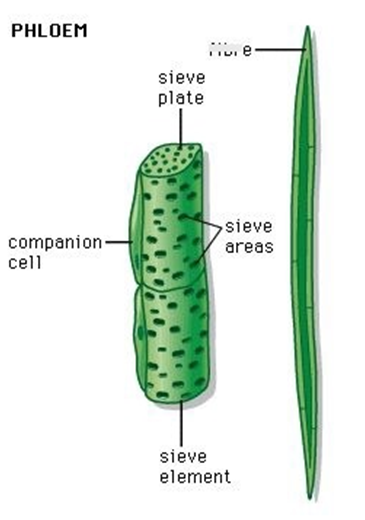
Sieve tubes
Sieve tubes are slenderical tube –like structures composed of elongated thin-walled cells, placed end to end. Their end walls are perforated by numerous pores and are called sieve plates.
Companion Cells
They are small thin-walled cells containing dense and very active cytoplasm and large elongated nucleus.
Functions
- Photo-synthetically prepared food materials are transported from the leaves to the storage organs.

 Vaishnav Publication
Vaishnav Publication
 ACERISE INDIA
ACERISE INDIA
